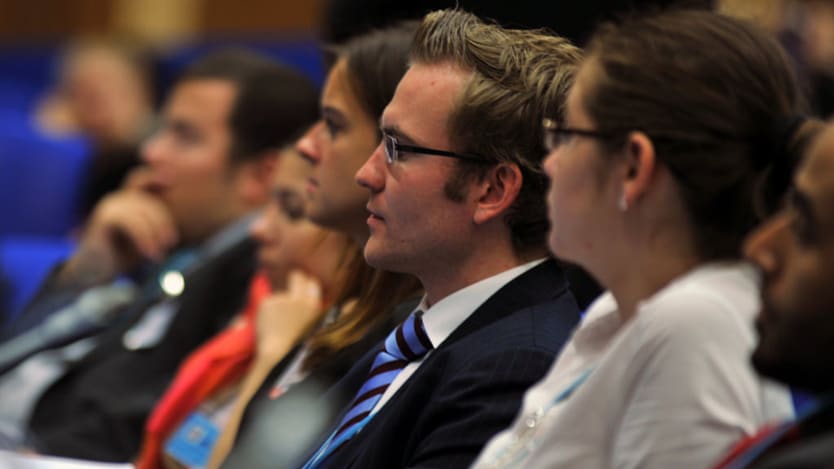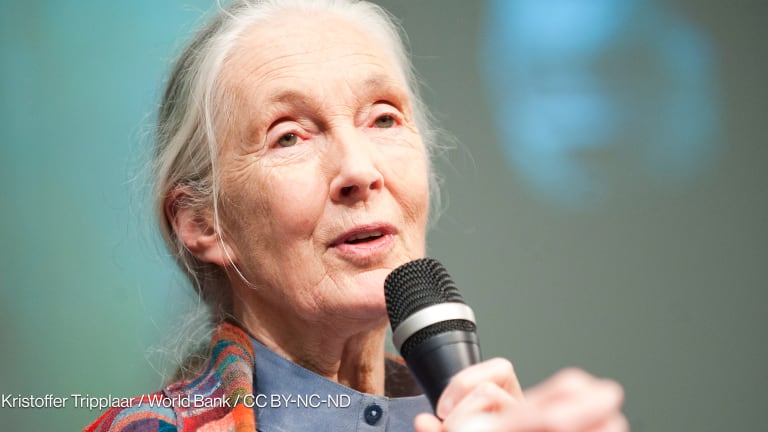
Despite the name, there is no age criteria to become a member of the growing network that is Young UN. The initiative, which started last year, aims to bring together professionals of all ages and seniority from across the United Nations system to help the now decades-old institution evolve and adapt to the modern era.
Ruth Blackshaw, executive officer at UNAIDS Executive Office and one of the founders behind Young UN, explains that the idea was to bring together people who have a shared vision to ensure that the U.N. embodies its principles and is “doing the same things internally that it advocates for externally.”
“It seemed to make sense to try and bring people together to have a more collective voice,” says Blackshaw, and to think of “how we can actually start to do things differently now so we can achieve the Sustainable Development Goals and so that the U.N. can meet the 21st century challenges.”
See more #HRLeads topics:
► Recruiter, talent acquisition partner, staffing specialist ... What's in a name — or job title?
► How to become a social media savvy recruiter
► Opinion: How to motivate staff through positive incentives (and avoid perverse ones)
► Opinion: 7 tips for organizational transformation in development
► Disability inclusion: How HR leaders can build more inclusive workplaces
Benjamin Salignat, human resources officer with the Office of Human Resources Management, has also been instrumental in getting the initiative up and running.* He stresses that Young UN is not a staff union, a place for office complaints or focused on the rights of a specific group. “We always try to think positively, we are not here to fight others,” says Salignat, “It’s open to anyone who wants to move things forward, we really deal with what is in the best interest of the organization.”
The network now has more than 500 members and, while most of those members are under 35, there is no cap on age or professional grade. The name reflects ‘the spirit of being open-minded and hopeful,” says Blackshaw. And while some long-serving members of staff have expressed skepticism that Young UN can create real change, the response has in general been “incredibly positive” she adds.
Young UN’s ambitions
While it is too early to measure the impact of the initiative so far, Blackshaw hopes Young UN can contribute to a cultural change in the U.N. system which would result in a more motivated and engaged workforce, particularly with the millennial generation. She also hopes that the initiative will benefit from an expanded membership, perhaps one day leading to the establishment of mini versions of Young UN within each duty station or entity while still under the umbrella of the current initiative. In the future, Young UN members also look forward to engaging in “credible dialogue” with senior management.
“It’s important that senior management get to hear practical ideas from time to time. It’s hard sometimes to look inside the organization and see what is going on, that’s why the senior managers need us to bring the reality from the ground,” says Salignat.
More collaboration between agencies has already been identified through Young UN workshops and online forums as a key area for improvement. In particular, members would like to see better alignment of HR recruitment practices and more coherent talent management systems across the different U.N. agencies.
“The SDGs are so interlinked, we need people who can easily move across thematic and geographic areas. It’s something younger generations expect, we join the U.N. not just to join UNICEF or UNAIDS, but because we want to work towards this bigger agenda,” says Blackshaw.
How it works
The initiative has outlined five focus areas — human resources, inter-agency collaboration, living the SDGs, technology, and integrity, transparency and accountability. With these thematic areas in mind, Young UN focuses on starting conversations, leading by example and sharing experiences, and advocating for change within the U.N. system. For example, the Young UN network wrote to the U.N. pension fund to request information on how the organization's pension fund policy is aligning with its investment in the SDGs. A couple of Young UN members also set up an advocacy committee after changes to the bike parking system in the U.N. Secretariat in New York made it more difficult for staff to cycle to work. They collected the signatures of over 300 staff members which led to management reassessing the situation and coming up with a more sustainable solution.
Lessons from Young UN
In the early days of the initiative, some members of Young UN met with The Elders, the independent global leaders group chaired by Kofi Annan, and were advised to identify people at all levels of the organization with open minds and speak to them. Since then, Young UN has focused on working with people who are “open and receptive” says Blackshaw, adding that they recognize they are not going to achieve change alone and need others to come on board.
Openness and transparency have also been an important principle in how things are run within Young UN. While the U.N. system can be very hierarchical, Young UN promotes a bottom-up approach and tries “to work in a different way,” says Salignat. “We really try to be a flat initiative, anyone who has an idea, good or bad, they have the opportunity to bring it forward,” he adds. Members of the network keep in touch via Slack, an internal communication platform you are just as likely to find in a tech startup, and in-person workshops and focus groups are held for members to share ideas and discuss issues. The responsibilities of chair rotate on a monthly basis, to allow all members and entities to feel fully engaged.
Salignat’s advice for other groups or organizations looking to bring about cultural change is to “question everything.” To get new answers and break down barriers you need to question your environment and ask why things have always been done in a particular way Salignat adds.
* Update, July 11, 2017: This article has been updated to clarify that Benjamin Salignat is a human resources officer with the Office of Human Resources Management.
Read more international development news online, and subscribe to The Development Newswire to receive the latest from the world’s leading donors and decision-makers — emailed to you free every business day.








